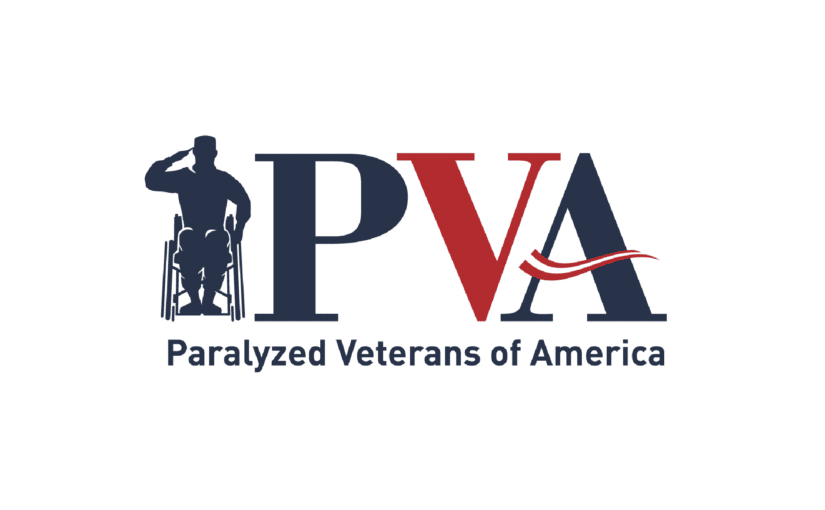Americans with Disabilities Act (ADA) Myths and Facts
Myth: There aren’t many people with disabilities in America.
Fact: The latest Census data (2010) shows that 56.7 million people in the United States live with a disability.
- 7.6 million: Number of people 15 and older in 2010 who had a hearing impairment. Among people 65 and older, 4 million had hearing impairments.
- 8.1 million: Number of people 15 and older in 2010 with a vision impairment.
- 30.6 million: Number of people 15 and older in 2010 who had movement impairment, such as walking or climbing stairs.
- 3.6 million: Number of people 15 and older in 2010 who used a wheelchair. This compares with 11.6 million people who used canes, crutches or walkers.
- 2.4 million: Number of people 15 and older in 2010 who had Alzheimer’s disease, senility or any form of neurocognitive disorders.
- 12.0 million: Number of people 15 and older in 2010 who required the assistance of others in order to perform one or more basic or instrumental activities of daily living, such as bathing, dressing, doing housework and preparing meals.
- 15.2 million: Number of adults who experienced difficulty with some kind of cognitive, mental, or emotional functioning.
- 1.2 million: Number of adults who have an intellectual disability and 944,000 had other developmental disabilities, like cerebral palsy or autism.
Myth: Everyone is covered under the ADA.
Fact: The following groups are protected by the ADA, according to the Department of Justice’s technical assistance manuals at www.ADA.gov:
- Someone with a “physical or mental impairment that substantially limits one or more major life activity,” including walking, talking, seeing, hearing, breathing, reasoning, or taking care of oneself. Major life activities also include bodily functions, such as cell growth or the proper functioning of immune, nervous, respiratory, or other body systems.
- People with a record of impairment that previously limited life activities, such as a history of treatment for cancer or mental illness that is now in remission.
- Anyone who is regarded as having a disability even if their life activities are not substantially limited, such as a person with adequately controlled diabetes or a facial disfigurement. This category also protects people who are not impaired but are treated as if they are – for example, someone who is refused entry to a public accommodation based on untrue rumors that he or she is HIV-positive.
- The law also protects able-bodied people against discrimination based on their known relationship or association with people who have disabilities. The Department of Justice presents an example of a day care center that refuses to admit a child whose sibling is HIV-positive, even though the child seeking admission does not have a disability.
Myth: The ADA applies to the federal government.
Fact: The ADA applies to state and local governments but not the federal government. The Rehabilitation Act of 1973 applies to the federal government. It prohibits discrimination on the basis of disability in programs conducted by federal agencies, in programs receiving federal financial assistance, in federal employment, and in the employment practices of federal contractors.
Myth: If the Department of Veterans Affairs (VA) denies your disability claim, then you are not a person with a disability for purposes of the ADA.
Fact: The VA’s criteria for determining eligibility for disability compensation are not the same as the ADA. A veteran may have a disability covered by the ADA even if he or she is not eligible for VA disability compensation.
Myth: The ADA requires private citizens to modify their homes to allow people with disabilities to visit.
Fact: The ADA does not require private citizens to modify their homes to make them accessible. Some homeowners, however, choose to modify their homes to make them “visitable” by friends and family members with disabilities. More information about how to make your home visitable is available at www.visitability.org/
Myth: The government is no help when it comes to paying for accessibility.
Fact: Not so. Federal tax incentives are available to help meet the cost of ADA compliance.
The Federal government has taken steps to encourage American businesses to increase accessibility. The Internal Revenue Code (IRC) now contains sections that provide tax incentives to comply with the law. Section 44 of the IRC grants eligible small businesses an annual tax credit up to $5,000 for expenditures to comply with the law. Section 190 of the IRC permits any business regardless of size to take a business deduction for qualified architectural and transportation barrier-removal expenses up to $15,000 for each taxable year. To learn more contact your local Internal Revenue Service (IRS) office or Office of Chief Counsel, IRS (202) 622-3110, 1-800-829-1040.
Myth: Older or historic buildings are exempt from the requirements.
Fact: There is no “grandfathered in” concept under the ADA. The law does hold facilities built or renovated after 1990 or 2010 to a more stringent standard of accessible design, but all publicly accessible places must take reasonable steps to improve access to patrons.
This mandate includes the obligation to remove barriers from existing buildings whenever it is “readily achievable” to do so. “Readily achievable” accessibility is a legal term determined by a reasonableness test for when a business can provide access to the products or services it offers “without much difficulty or expense.”
Myth: The ADA requires extensive renovation of all state and local government buildings to make them accessible.
Fact: The ADA requires all government programs, not all government buildings, to be accessible. “Program accessibility” is a very flexible requirement and does not require a local government to do anything that would result in an undue financial or administrative burden. Not every building, nor each part of every building, needs to be accessible. Structural modifications are required only when there is no alternative available for providing program access.
Myth: The ADA protections apply to housing.
Fact: The ADA does not protect people with disabilities against discrimination in housing. The ADA applies to housing rental and sales offices but protections against housing discrimination fall under the Fair Housing Act or Section 504 of the Rehabilitation Act.
Myth: A commercial landlord is liable for ADA compliance, not the business tenant.
Fact: Both the landlord and the business tenant share the legal responsibility for complying with ADA accessibility, including removing barriers or providing other accessibility devices such as “auxiliary aids and services.” These include interpreters, written materials, assistive listening devices, or computer-aided services. The landlord and the business tenant may decide by lease who is supposed to make the changes or provide the services, but both remain legally responsible to the patron or employee.
Myth: If someone with a disability is mistreated by airline personnel while on board an airplane it is a violation of the ADA.
Fact: The Air Carrier Access Act (ACAA) protects people with disabilities from discrimination in air transportation. It applies only to air carriers that provide regularly scheduled services for hire to the public. ACAA related complaints can be filed online with the Department of Transportation.
Myth: Sign language interpreters are required everywhere.
Fact: The ADA only requires that effective communication not exclude people with disabilities—which in many situations means providing written materials or exchanging notes. The law does not require any measure that would cause an undue financial or administrative burden.
Myth: If a grocery store discriminates against a customer with a disability because of his or her disability, then the individual’s only way to get relief is to hire an attorney.
Fact: If a public accommodation such as a grocery store discriminates against a customer due to a disability, then he or she can file a complaint online with the Department of Justice at http://www.ada.gov/complaint/. Individuals may also be able to file complaints with their state or city for violation of state or local laws that prohibit disability based discrimination.
Myth: Restaurants must provide menus in Braille.
Fact: The ADA does not require restaurants to provide Braille menus. A restaurant server may read menu choices to a blind or low-vision customer. However, many restaurants, particularly national chains, have Braille menus available for customers which provide increased access for these consumers.
Myth: The ADA requires businesses to remove barriers overnight.
Fact: Businesses are only required to do what is readily achievable at that time. A small business may find that installing a ramp is not readily achievable this year, but if profits improve it will be readily achievable next year. Businesses are encouraged to evaluate their facilities and develop a long-term plan for barrier removal that is commensurate with their resources.
Myth: The ADA places a financial burden on small businesses that cannot afford to make accommodations for individuals with disabilities.
Fact: Businesses with fewer than 15 employees are not covered by the employment provisions of the ADA. Moreover, a covered employer does not have to provide a reasonable accommodation that would cause an “undue hardship.” Undue hardship is defined as an action requiring significant difficulty or expense when considered in light of factors such as an organization’s size, financial resources and the nature and structure of its operation.
Myth: The ADA forces business and government to spend lots of money hiring unqualified people.
Fact: No unqualified job applicant or employee with a disability can claim employment discrimination under the ADA. Employees must meet all the requirements of the job and perform the essential functions of the job with or without reasonable accommodation. No accommodation must be provided if it would result in an undue hardship on the employer.
Myth: The ADA gives job applicants with disabilities advantages over job applicants without disabilities.
Fact: The ADA does not give hiring preference to persons with disabilities.
Myth: Employees with invisible disabilities must tell their employers about their disabilities.
Fact: An employee with an invisible disability is not required to tell an employer that he or she has a disability. If an employee has an invisible disability but it doesn’t have any impact on his or her ability to perform job-related tasks then the employee doesn’t have to tell his or her employer.
Myth: Providing accommodations for people with disabilities is expensive.
Fact: Did you know that for the minority of workers with disabilities who do need some sort of special equipment or accommodation, 56% of these cost less than $600, with many costing nothing at all?. And available tax incentives make it even easier for businesses to cover accessibility costs.
Myth: It is nearly impossible for a company to fire an employee with a disability because of the ADA.
Fact: The ADA does not prohibit companies from firing employees with disabilities as long as the adverse action isn’t discrimination related to a disability. Employees who have poor work performance, embezzle, or commit any other legitimate firing offense can be let go if needed. Employers can also fire employees who pose a direct threat to health or safety in the work place due to their disability.
Myth: A service animal protected by the ADA is any animal that provides assistance to a person with a disability.
Fact: The Department of Justice’s ADA regulations define a service animal as a dog that is individually trained to do work or perform tasks for a person with a disability. In certain situations, a service animal may also be a miniature horse.
Myth: Under the ADA, service animals must wear vests identifying them as service animals.
Fact: The Department of Justice does not require service animals to have a special license or training certificate showing them to be service animals. If there is a question about the services that an animal provides then a staff person may only ask a person with a disability whether his or her dog is a service animal required due to a disability and what work or task the dog is able to perform.




